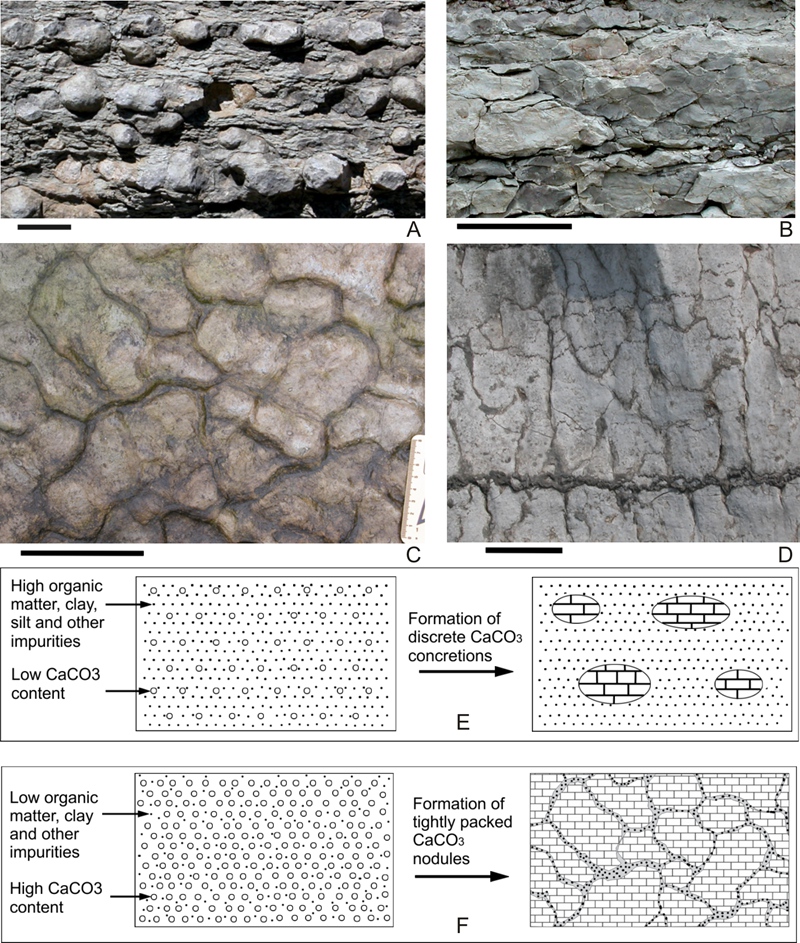The Pagoda Formation is a unique Ordovician stratigraphic unit on South China Paleoplate, and extends widely on the Yangtze Platform for over 2000 km from east to west and 800 km from north to south. This carbonate unit deposits during the early Late Ordovician, with variable thicknesses from meters to a hundred meters, and the Pagoda network structure has been puzzling geologists, especially paleontologists, about its origin for nearly a century. It has been interpreted variously by different researchers and putatively as desiccation cracks, subaqueous shrinkage or syneresis cracks, biogenic traces, tectonic fracturing or loading structures.
The researchers on Ordovician from Nanjing Institute of Geology and Palaeontology, Chinese Academy of Sciences, in collaboration with sedimentologists and paleontologists from Peking University and Western University, Canada, have been carrying out the sedimentological and paleontological study for over ten years. And their investigation shows a significant regularity on the lateral and vertical distribution of the Pagoda Limestone’s lithologic features, thickness, fauna development etc., and the so called “time-specific” network structure also changes in its morphology with the change of paleogeographic background. In laboratory, by combining the results of paleontology, sedimentology, geochemistry, regional tectonics etc., the research group put forward a new explanation on the origin of the Upper Ordovician Pagoda Formation with network structure in South China. Such "time-specific" network structure is explained as a special kind of meganodules. Its formation require specific paleogeographic background, so South China Paleoplate might be located within equatorial zone (the main body of South China Paleoplate located within 10° south and north of the then equator). This conclusion further supports a specific position for South China during the Late Ordovician and early Silurian, where might be one of the radiation centres in the porcess of the Great Ordovician Biodiversification.
Related information of this paper: Zhan Renbin, Jin Jisuo, Liu Jianbo, Patricia Corcoran, Luan Xiaocong and Wei Xin. 2015. Meganodular limestone of the Pagoda Formation: A time-specific carbonate facies in the Upper Orodovician of South China. Palaeogeography, Palaeoclimatology, Palaeoecology.

Fig. 1. A: Distribution of the Upper Ordovician Pagoda Formation, with variable thicknesses of the formation depicted by circles of different sizes(up to 90m); B: modern frequency and intensity map of hurricane/cyclone tracks, no appearance of the strong convection weather above within 10° of the equator; C: the proposed paleogeographic position of South China during Late Ordovician, straddled the equator, lacking of hurricanes and storms, providing well background conditions to the formation of Pagoda meganodular limestone.

Fig. 2. Geochemical analyses of nodule and crack of the Pagoda Limestone, showing consistent differentiation (or not) of C, O and ICP-MS elemental contents between them, proving this new explanation of the Pagoda Limestone.

Fig. 3. Comparison of different kinds of nodular limestone (C, D, meganodular limestone, Pagoda Formation) and their interpreted origins (E, F, F showing the origin of the Pagoda Limestone). Scale bars = 10 cm.
Download:
